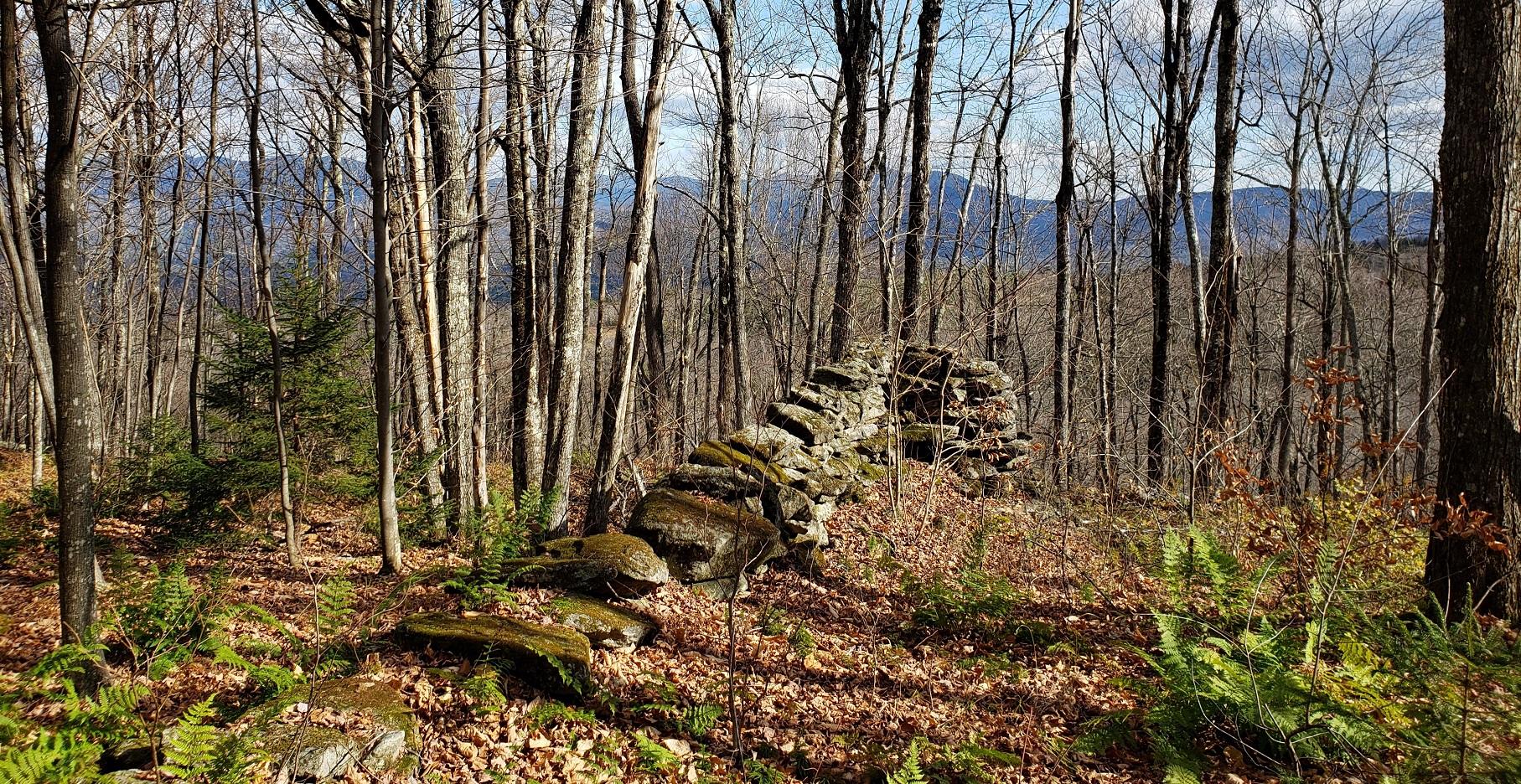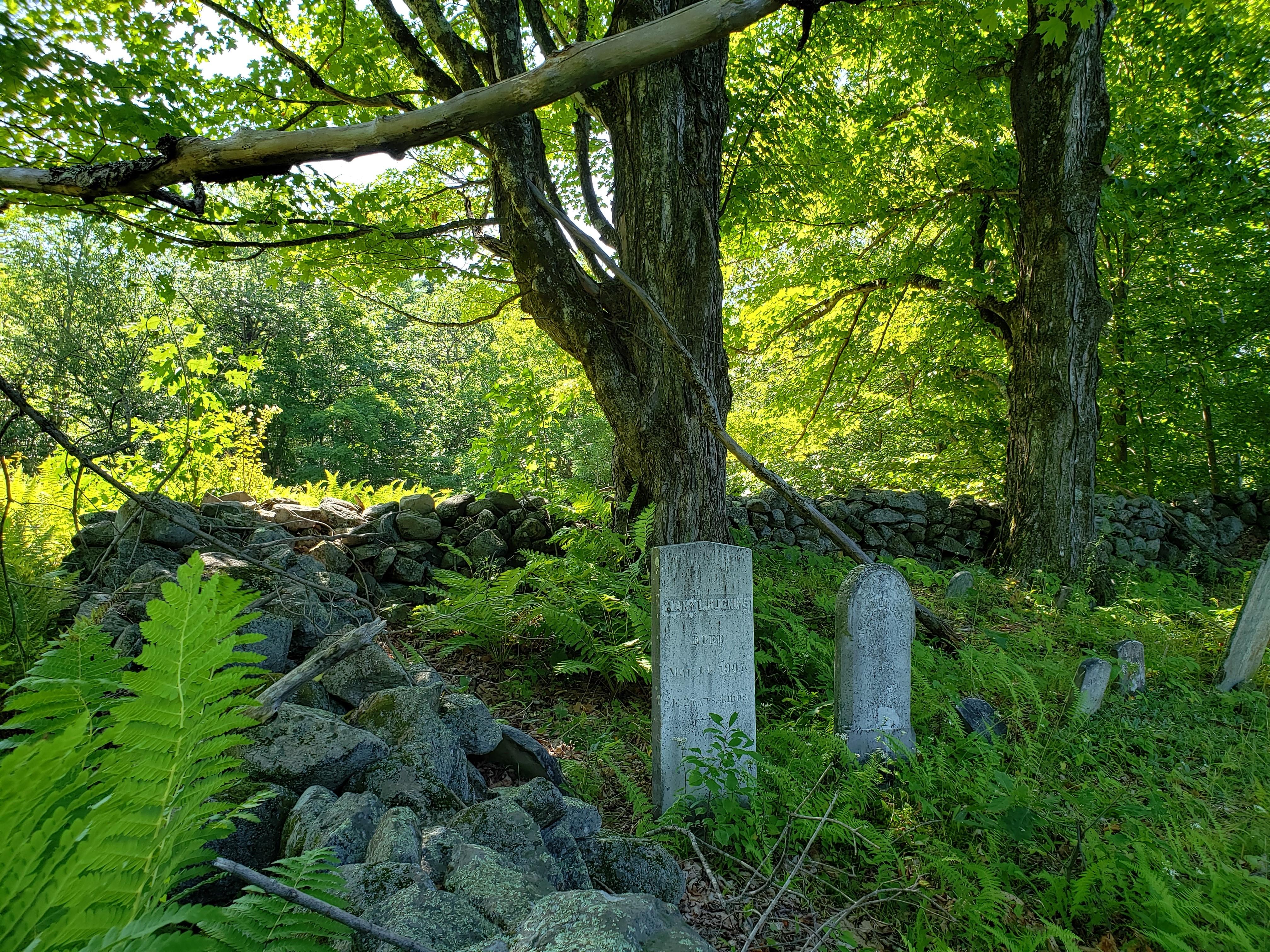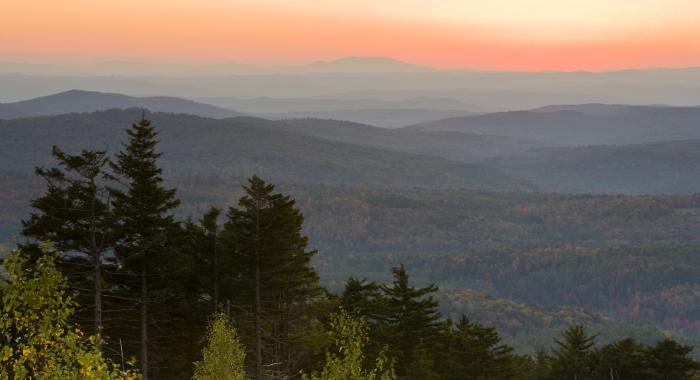Clues to NH’s History Hidden in the Woods

An old foundation seemingly in the middle of nowhere. Picture by Emily Landry
New Hampshire is a pretty cool place. There are mountains, rivers, lakes, oceans, and a lot of trees. NH is over 80% forested (83% currently as measured by USDA Forest Service), but it hasn’t always been that way.

During the late 18th and early 19th centuries, extensive forests were cut down and the land was used for agricultural purposes – raising animals and growing crops. As time went on, people began moving west with hope for new fertile lands. Farms in NH were being abandoned. Slowly, NH forests expanded, swallowing old agricultural fields and crowding out old roads. Houses and barns were left to be broken down by fungi and other decomposers in the soil.
Today, pieces of NH’s past can be seen scattered throughout the forests. If you look close enough, these historical features of the land can tell you a story. As a conservation easement steward, I spend a lot of time in the woods. One hint of the past I run into most frequently are rock walls - miles and miles of rock walls painting the landscape, going this way and that.
Not all rock walls are the same though – they can tell different stories. If you inspect the rock wall you might find that it consists of some smaller rocks as well as the larger rocks. Small rocks most likely indicate that the adjacent land was used for cultivating crops, because in order to till the soil, rocks were removed and placed in the surrounding rock walls. Walls made only of larger rocks were most likely used for animals or to mark boundaries. More clues may be found to distinguish the use of the rock wall even further. If you see barbed wire nearby, sometimes grown into a tree, this is a sign the wall was used to enclose pastureland for animals. Another clue that the rock walls were used for animals are very large, old trees. Back when the land was clear, a couple trees along the fence or in the pasture would provide shade for the animals. Fast forward a century or so, and these trees can sometimes be found in the middle of a much younger forest.
Another more obvious historical feature of the land are old roads, some of which are dotted with cellar holes. It’s difficult to tell what used to stand upon these cellar holes, but one can imagine. It could have been a farm with acres upon acres of pastureland for their sheep and cropland for food, all outlined with stone-walls. Or maybe, it was a just a small house built by a farmhand and his family.

I can’t help but to take some time admiring an old stone wall or cellar hole, thinking about the people who used the very land I’m standing on before me. It makes the middle of nowhere feel like somewhere.
Next time you’re out in the middle of the woods, see if you can find some evidence of our beautiful state’s past.
For more information on New England’s history of the land, check out Reading the Forested Landscape: A Natural History of New England by Tom Wessels.

Conservation Easement Stewardship at the Forest Society
For every conservation easement the Forest Society accepts, we make a commitment to the landowner that we will protect the conservation values of their property forever.
